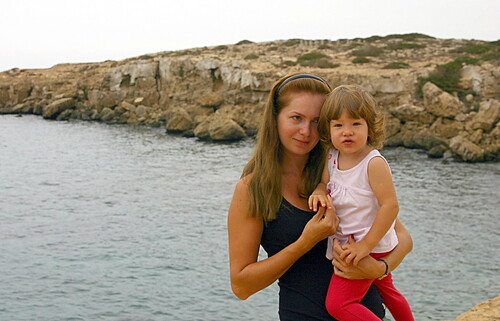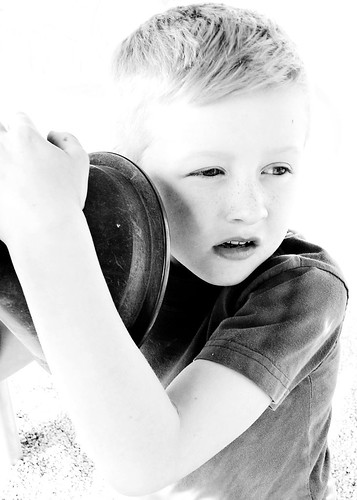 I recommend you research and interview several divorce attorneys. This can help you develop and clarify some of your goals and interests and help confirm the choice of process you and your spouse want to use. It’s important to keep in mind that an attorney is only one member of what hopefully will be a team of professionals to help you on your “getting unmarried” journey. Child specialists, financial specialists specifically experienced in divorce planning, and possibly a coach should also be considered as a part of your team.
My reason for suggesting these other professionals is simple. They each are experts in their respective fields. Attorneys are not really trained to be financial specialists nor are they trained to be therapists or child specialists. They are trained to be attorneys and are a much needed part of your divorce team.
Divorce however, is more than a legal event. Getting unmarried is a financial, emotional, and relational event as well as a legal event. Think about it, if you were to have heart surgery would you choose a general practice physician? I doubt it. Getting unmarried is like having open-heart surgery on your life’s finances, your children and multiple relationships. You will, in my opinion, be better served by having a team of experts in their respective fields assisting you and your spouse on this journey.
Now back to choosing an attorney. You want someone who supports you and the type of process you and your spouse want to use. You will both want someone who listens to you, someone who doesn’t necessarily tell you what you want to hear but rather someone who has the wherewithal and will honestly be a realistic advocate.
If an attorney promises you specific outcomes in your divorce, I would encourage you to run the other way; don’t walk. A good divorce attorney knows there is no certainty of outcomes in the divorce arena. You want a problem solver not a problem maker. There are plenty of good problem solver types of attorneys around. Unfortunately, as in any profession, there are some problem makers as well.
How do you find the problem solvers? In today’s wired world you can Google the attorneys name, check out their website, LinkedIn profile and Facebook pages. You can do all this before ever picking up the phone. If you do thorough research and interview several attorneys you should be able to distinguish between the problem solvers and problem makers. You may want to consider making an initial phone call to an attorney before scheduling an interview session. This can tell you how quickly they return calls and how connected you might feel towards them from your initial phone conversation. It will also save you and the attorney time if you decide not to set up a face-to-face interview after the phone call.
When interviewing attorneys, ask how they will communicate with you. Some clients think their attorney and other professionals should be available for them around the clock. Remember you are not their only client and they have a personal life and schedule as you do. Ask them if they will be communicating directly with you or will their assistant or paralegal. Ask them what you should expect in terms of them replying to your phone calls and/or emails. It’s better for both you and the attorney to have clear expectations up front to avoid disappointment later on.
Traditionally, I believe most individuals begin the process of getting unmarried through contact with an attorney. Part of the reason for this is our culture including media has conditioned us to first approach divorce through the legal channel. While I certainly would not discourage anyone from beginning the divorce process through the legal avenue, there are other approaches.
It may be through a marital counselor, therapist, financial professional, divorce coach or some other channel. While the majority of divorce cases still begin with attorneys on board, it is not unusual for a couple to begin the process with a child specialist, financial specialist, or divorce coach, brining the attorneys on board at a later time. This approach is dependent upon the comfort level of each spouse, their priorities, needs, and concerns. The point is the divorce process can begin in a number of avenues and does not necessarily have to always begin with the attorney.
In my next and final post in this series I will offer some questions for you to consider when interviewing an attorney.
I recommend you research and interview several divorce attorneys. This can help you develop and clarify some of your goals and interests and help confirm the choice of process you and your spouse want to use. It’s important to keep in mind that an attorney is only one member of what hopefully will be a team of professionals to help you on your “getting unmarried” journey. Child specialists, financial specialists specifically experienced in divorce planning, and possibly a coach should also be considered as a part of your team.
My reason for suggesting these other professionals is simple. They each are experts in their respective fields. Attorneys are not really trained to be financial specialists nor are they trained to be therapists or child specialists. They are trained to be attorneys and are a much needed part of your divorce team.
Divorce however, is more than a legal event. Getting unmarried is a financial, emotional, and relational event as well as a legal event. Think about it, if you were to have heart surgery would you choose a general practice physician? I doubt it. Getting unmarried is like having open-heart surgery on your life’s finances, your children and multiple relationships. You will, in my opinion, be better served by having a team of experts in their respective fields assisting you and your spouse on this journey.
Now back to choosing an attorney. You want someone who supports you and the type of process you and your spouse want to use. You will both want someone who listens to you, someone who doesn’t necessarily tell you what you want to hear but rather someone who has the wherewithal and will honestly be a realistic advocate.
If an attorney promises you specific outcomes in your divorce, I would encourage you to run the other way; don’t walk. A good divorce attorney knows there is no certainty of outcomes in the divorce arena. You want a problem solver not a problem maker. There are plenty of good problem solver types of attorneys around. Unfortunately, as in any profession, there are some problem makers as well.
How do you find the problem solvers? In today’s wired world you can Google the attorneys name, check out their website, LinkedIn profile and Facebook pages. You can do all this before ever picking up the phone. If you do thorough research and interview several attorneys you should be able to distinguish between the problem solvers and problem makers. You may want to consider making an initial phone call to an attorney before scheduling an interview session. This can tell you how quickly they return calls and how connected you might feel towards them from your initial phone conversation. It will also save you and the attorney time if you decide not to set up a face-to-face interview after the phone call.
When interviewing attorneys, ask how they will communicate with you. Some clients think their attorney and other professionals should be available for them around the clock. Remember you are not their only client and they have a personal life and schedule as you do. Ask them if they will be communicating directly with you or will their assistant or paralegal. Ask them what you should expect in terms of them replying to your phone calls and/or emails. It’s better for both you and the attorney to have clear expectations up front to avoid disappointment later on.
Traditionally, I believe most individuals begin the process of getting unmarried through contact with an attorney. Part of the reason for this is our culture including media has conditioned us to first approach divorce through the legal channel. While I certainly would not discourage anyone from beginning the divorce process through the legal avenue, there are other approaches.
It may be through a marital counselor, therapist, financial professional, divorce coach or some other channel. While the majority of divorce cases still begin with attorneys on board, it is not unusual for a couple to begin the process with a child specialist, financial specialist, or divorce coach, brining the attorneys on board at a later time. This approach is dependent upon the comfort level of each spouse, their priorities, needs, and concerns. The point is the divorce process can begin in a number of avenues and does not necessarily have to always begin with the attorney.
In my next and final post in this series I will offer some questions for you to consider when interviewing an attorney.  I recommend you research and interview several divorce attorneys. This can help you develop and clarify some of your goals and interests and help confirm the choice of process you and your spouse want to use. It’s important to keep in mind that an attorney is only one member of what hopefully will be a team of professionals to help you on your “getting unmarried” journey. Child specialists, financial specialists specifically experienced in divorce planning, and possibly a coach should also be considered as a part of your team.
My reason for suggesting these other professionals is simple. They each are experts in their respective fields. Attorneys are not really trained to be financial specialists nor are they trained to be therapists or child specialists. They are trained to be attorneys and are a much needed part of your divorce team.
Divorce however, is more than a legal event. Getting unmarried is a financial, emotional, and relational event as well as a legal event. Think about it, if you were to have heart surgery would you choose a general practice physician? I doubt it. Getting unmarried is like having open-heart surgery on your life’s finances, your children and multiple relationships. You will, in my opinion, be better served by having a team of experts in their respective fields assisting you and your spouse on this journey.
Now back to choosing an attorney. You want someone who supports you and the type of process you and your spouse want to use. You will both want someone who listens to you, someone who doesn’t necessarily tell you what you want to hear but rather someone who has the wherewithal and will honestly be a realistic advocate.
If an attorney promises you specific outcomes in your divorce, I would encourage you to run the other way; don’t walk. A good divorce attorney knows there is no certainty of outcomes in the divorce arena. You want a problem solver not a problem maker. There are plenty of good problem solver types of attorneys around. Unfortunately, as in any profession, there are some problem makers as well.
How do you find the problem solvers? In today’s wired world you can Google the attorneys name, check out their website, LinkedIn profile and Facebook pages. You can do all this before ever picking up the phone. If you do thorough research and interview several attorneys you should be able to distinguish between the problem solvers and problem makers. You may want to consider making an initial phone call to an attorney before scheduling an interview session. This can tell you how quickly they return calls and how connected you might feel towards them from your initial phone conversation. It will also save you and the attorney time if you decide not to set up a face-to-face interview after the phone call.
When interviewing attorneys, ask how they will communicate with you. Some clients think their attorney and other professionals should be available for them around the clock. Remember you are not their only client and they have a personal life and schedule as you do. Ask them if they will be communicating directly with you or will their assistant or paralegal. Ask them what you should expect in terms of them replying to your phone calls and/or emails. It’s better for both you and the attorney to have clear expectations up front to avoid disappointment later on.
Traditionally, I believe most individuals begin the process of getting unmarried through contact with an attorney. Part of the reason for this is our culture including media has conditioned us to first approach divorce through the legal channel. While I certainly would not discourage anyone from beginning the divorce process through the legal avenue, there are other approaches.
It may be through a marital counselor, therapist, financial professional, divorce coach or some other channel. While the majority of divorce cases still begin with attorneys on board, it is not unusual for a couple to begin the process with a child specialist, financial specialist, or divorce coach, brining the attorneys on board at a later time. This approach is dependent upon the comfort level of each spouse, their priorities, needs, and concerns. The point is the divorce process can begin in a number of avenues and does not necessarily have to always begin with the attorney.
In my next and final post in this series I will offer some questions for you to consider when interviewing an attorney.
I recommend you research and interview several divorce attorneys. This can help you develop and clarify some of your goals and interests and help confirm the choice of process you and your spouse want to use. It’s important to keep in mind that an attorney is only one member of what hopefully will be a team of professionals to help you on your “getting unmarried” journey. Child specialists, financial specialists specifically experienced in divorce planning, and possibly a coach should also be considered as a part of your team.
My reason for suggesting these other professionals is simple. They each are experts in their respective fields. Attorneys are not really trained to be financial specialists nor are they trained to be therapists or child specialists. They are trained to be attorneys and are a much needed part of your divorce team.
Divorce however, is more than a legal event. Getting unmarried is a financial, emotional, and relational event as well as a legal event. Think about it, if you were to have heart surgery would you choose a general practice physician? I doubt it. Getting unmarried is like having open-heart surgery on your life’s finances, your children and multiple relationships. You will, in my opinion, be better served by having a team of experts in their respective fields assisting you and your spouse on this journey.
Now back to choosing an attorney. You want someone who supports you and the type of process you and your spouse want to use. You will both want someone who listens to you, someone who doesn’t necessarily tell you what you want to hear but rather someone who has the wherewithal and will honestly be a realistic advocate.
If an attorney promises you specific outcomes in your divorce, I would encourage you to run the other way; don’t walk. A good divorce attorney knows there is no certainty of outcomes in the divorce arena. You want a problem solver not a problem maker. There are plenty of good problem solver types of attorneys around. Unfortunately, as in any profession, there are some problem makers as well.
How do you find the problem solvers? In today’s wired world you can Google the attorneys name, check out their website, LinkedIn profile and Facebook pages. You can do all this before ever picking up the phone. If you do thorough research and interview several attorneys you should be able to distinguish between the problem solvers and problem makers. You may want to consider making an initial phone call to an attorney before scheduling an interview session. This can tell you how quickly they return calls and how connected you might feel towards them from your initial phone conversation. It will also save you and the attorney time if you decide not to set up a face-to-face interview after the phone call.
When interviewing attorneys, ask how they will communicate with you. Some clients think their attorney and other professionals should be available for them around the clock. Remember you are not their only client and they have a personal life and schedule as you do. Ask them if they will be communicating directly with you or will their assistant or paralegal. Ask them what you should expect in terms of them replying to your phone calls and/or emails. It’s better for both you and the attorney to have clear expectations up front to avoid disappointment later on.
Traditionally, I believe most individuals begin the process of getting unmarried through contact with an attorney. Part of the reason for this is our culture including media has conditioned us to first approach divorce through the legal channel. While I certainly would not discourage anyone from beginning the divorce process through the legal avenue, there are other approaches.
It may be through a marital counselor, therapist, financial professional, divorce coach or some other channel. While the majority of divorce cases still begin with attorneys on board, it is not unusual for a couple to begin the process with a child specialist, financial specialist, or divorce coach, brining the attorneys on board at a later time. This approach is dependent upon the comfort level of each spouse, their priorities, needs, and concerns. The point is the divorce process can begin in a number of avenues and does not necessarily have to always begin with the attorney.
In my next and final post in this series I will offer some questions for you to consider when interviewing an attorney. 





